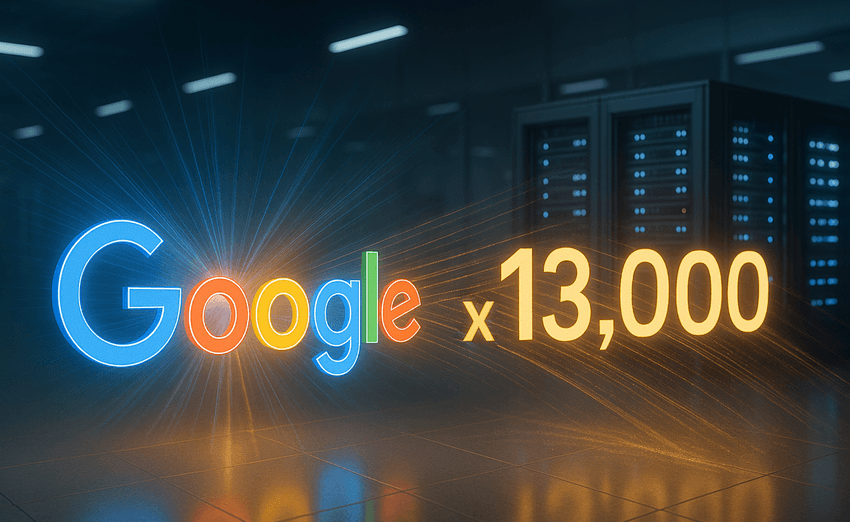Google’s Quantum Leap
In a landmark scientific breakthrough, Google announced that its Willow quantum processor has achieved the first verifiable quantum advantage, performing a molecular mapping experiment 13,000 times faster than the most powerful supercomputers on Earth.
The experiment used a technique known as “quantum echoes,” where a signal targets a single qubit - the building block of quantum computing - causing it to react and then “echo” back measurable information.
Today, we’re announcing a major breakthrough that marks a significant step forward in the world of quantum computing. For the first time in history, our teams at @GoogleQuantumAI demonstrated that a quantum computer can successfully run a verifiable algorithm, 13,000x faster than…
— Google AI (@GoogleAI) October 22, 2025
Today, we’re announcing a major breakthrough that marks a significant step forward in the world of quantum computing. For the first time in history, our teams at @GoogleQuantumAI demonstrated that a quantum computer can successfully run a verifiable algorithm, 13,000x faster than…
— Google AI (@GoogleAI) October 22, 2025
This milestone demonstrates not just raw quantum speed but also reproducibility, a critical step toward establishing quantum supremacy in practical applications.
Quantum Advantage Explained
Traditional computers process data sequentially, but quantum computers exploit quantum states - superposition and entanglement - to perform countless calculations simultaneously.
In this experiment, Willow effectively simulated molecular interactions that would take classical computers years to complete in just minutes.
Scientists describe the breakthrough as a new era of computational chemistry, one that could transform drug discovery, materials engineering, and climate modeling. But the implications go far beyond science - especially for the world of cryptocurrency.
The Existential Threat to Crypto
Quantum computing represents the greatest potential threat to Bitcoin and blockchain security since the technology’s inception, experts warn.
That’s because quantum computers could, in theory, break elliptic curve cryptography (ECDSA) - the algorithm that secures Bitcoin addresses, private keys, and digital wallets.
He criticized crypto communities for “debating theoretical solutions instead of acting” on quantum-safe upgrades, arguing that the risk window is shrinking faster than many anticipate.
How Close Are We to Quantum Decryption?
For now, the danger remains theoretical. Quantum machines still lack the power to break modern encryption keys, which typically use 2,048-4,096-bit protection.
Nonetheless, governments and corporations are racing to future-proof critical systems. The U.S. Securities and Exchange Commission (SEC) recently received a proposal outlining a roadmap for post-quantum cryptography standards by 2035, aiming to safeguard digital infrastructure - including crypto networks - from future attacks.
The Countdown to Quantum Security
Google’s achievement marks a turning point in the race toward quantum-era computing. While scientists hail it as a revolutionary advancement, the crypto community views it as a warning shot.
As quantum hardware scales and encryption-cracking becomes more feasible, pressure is mounting on blockchain networks to migrate toward quantum-resistant algorithms - before it’s too late.
For now, the Willow processor’s success showcases how far humanity has come - and how quickly the digital frontier may need to evolve to stay secure.



